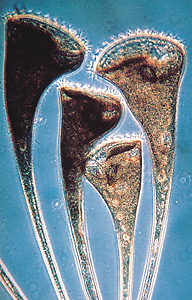Protozoan, << `proh` tuh ZOH uhn, >> is the common name for a single-celled organism that may have plantlike or animallike characteristics. Protozoans are traditionally classified in the kingdom Protista (see Protist). But scientists no longer believe that protozoans and other protists are closely related. The study of protozoans is called protozoology.
Characteristics of protozoans
There are tens of thousands of species (kinds) of protozoans. Most of them are so small that they can be seen only through a microscope. Protozoans live in moist places. They are found in salt water, fresh water, and soil. They also live in the bodies of plants and animals. Many protozoans can form cysts (protective coverings) that let them survive drying. A protozoan emerges from its cyst when water is present.
Structure.
The body of a protozoan is made up just one cell. That single cell performs all the necessary life processes by itself. It eats, breathes, and responds to its surroundings. It has the same basic parts as the cells of plants and animals. For example, it has a nucleus and cell membrane. The protozoan cell also has structures not found in plant or animal cells. Some protozoan cells have cell mouths for feeding. Others have a bright red spot called an eyespot. The eyespot helps protozoans sense light and dark but cannot form images.
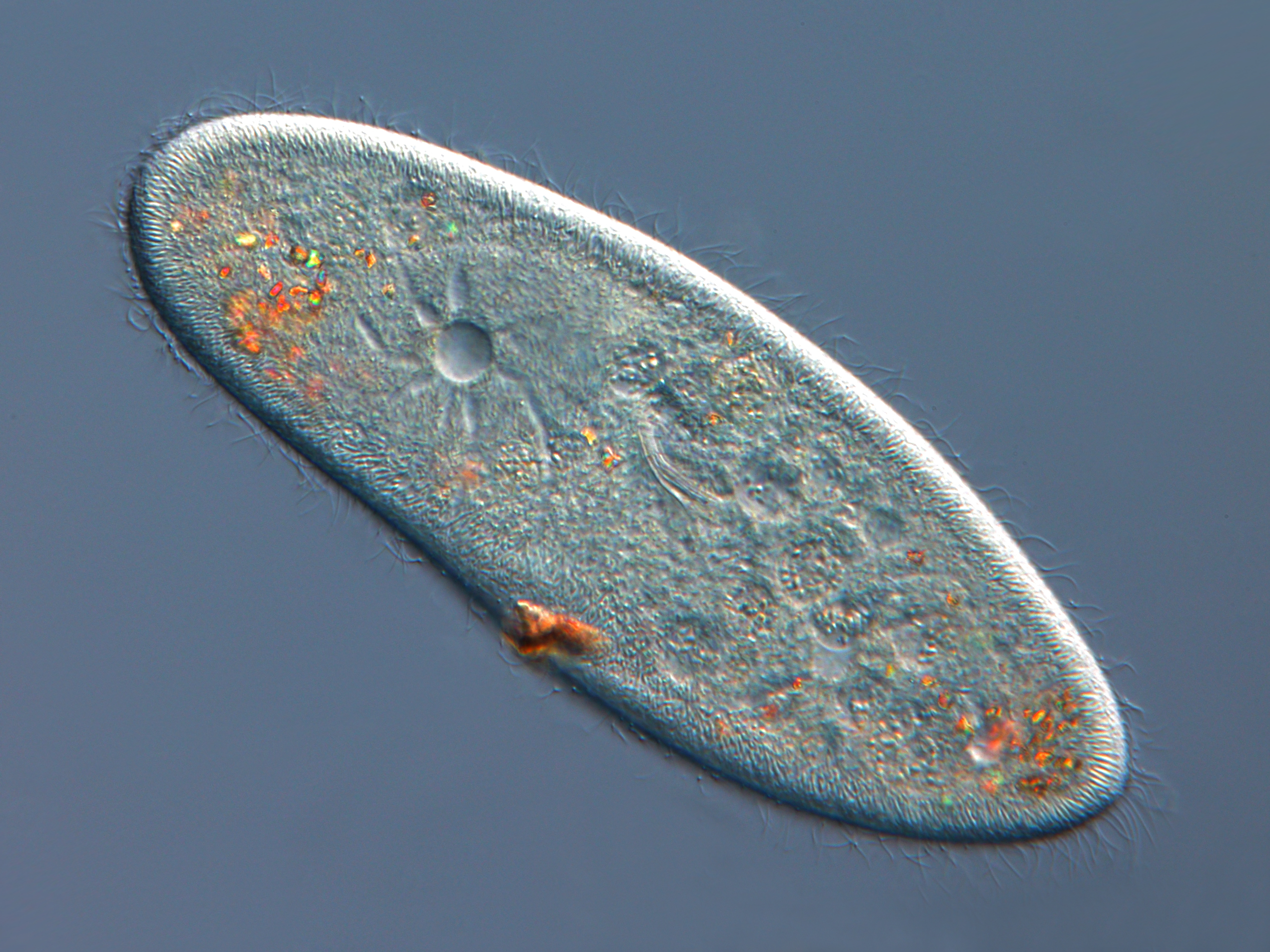
The bodies of some protozoans contain chlorophyll. Chlorophyll is the green substance also found in plants. Chlorophyll enables these protozoans to make their own food (see Photosynthesis).
Reproduction.
Some protozoans reproduce by a process called fission or mitosis. In this process, the original cell splits in two. Each half of the original cell becomes a separate individual. Certain protozoans reproduce by dividing into many cells called spores. Other protozoans engage in sexual reproduction. In all these forms of reproduction, the cell’s nucleus is divided among the new individuals. See Reproduction.
Importance.
In spite of their small size, protozoans are important to other living things. Millions of protozoans swim in the sea and in freshwater lakes and streams. They help keep the water clean by eating bacteria. Protozoans are eaten by animals, especially by larval (young) fish and crustaceans such as shrimp. Some protozoans, such as the foraminifera, are covered with stony shells. When they die, they settle to the bottom of the ocean. Their shells contribute to the formation of limestone. The fossil shells of such protozoans are partly responsible for the chalk cliffs in southern England.

Some protozoans are parasites that can harm human beings and animals. Malaria and African sleeping sickness are among the diseases they cause.
Types of protozoans
Protozoans can be divided into four groups on the basis of how they move about. These groups are flagellates, sarcodines, apicomplexans, and ciliates.
Flagellates
have one or more long hairlike projections from their bodies. The projections are called flagella. The flagella whip about rapidly to move the flagellate through the water. Flagellates are often oval in shape. Many have chlorophyll in their bodies. The green euglena is shaped much like a submarine. The Volvox is a green ball of flagellated cells that live together. This ball moves about when the flagella of the individual members whip in the water. The trypanosomes, which cause African sleeping sickness, are also flagellates.
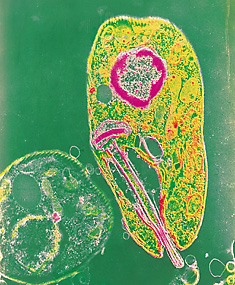
Sarcodines
move by extending fingerlike pseudopods (false feet). A sarcodine forms these structures by pushing out its membrane. Sarcodines also use pseudopods to capture food. Sarcodines include the amebas. Most amebas live in water or moist soil. Some live in the bodies of human beings and animals. Some cause disease. Others do not. For example, the harmless colon ameba is found in the large intestine of many healthy people.
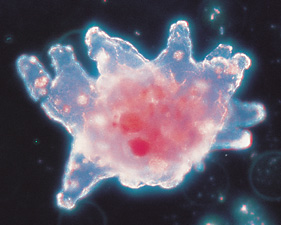
Radiolaria are amebalike protozoans. Radiolarians have a tiny skeleton that is made of silica. After a radiolarian dies, this skeleton sinks to the ocean floor. Millions of shells have accumulated in parts of the ocean, forming thick layers of ooze.
Foraminifera have shells made of chalklike material. Some of the ancient foraminifera were almost as large as a quarter. Geologists seeking oil study foraminifer fossil shells in rocks found below the surface. They indicate how the rock layers are arranged.
Apicomplexans
make up a special group of protozoans that move by gliding. Protozoans of this type live as parasites. The parasite that causes malaria is a well-known apicomplexan.
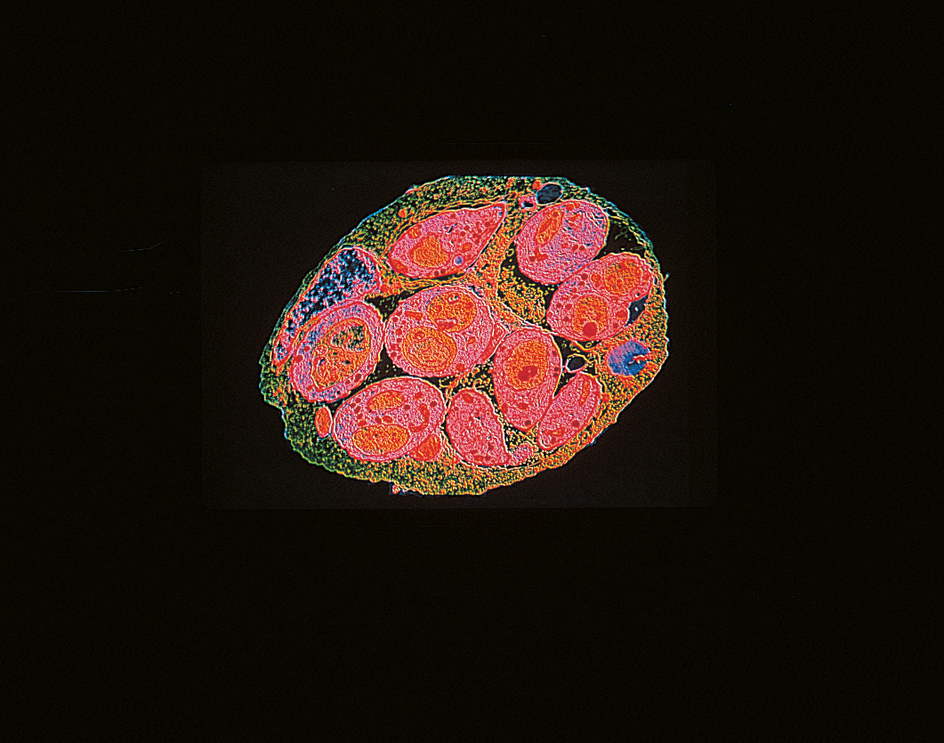
Ciliates
are the most complex protozoans. All of them have, at one time or another, fine hairlike projections called cilia. The cilia on the cell’s surface help the ciliates move about and capture food. Stentor ranks among the largest of all protozoans. It is shaped like a horn. Another kind of ciliate, vorticella, looks like an upsidedown bell on a long stalk. The cilia around the mouth of the vorticella create a whirlpool around the top of the bell. The whirlpool draws food into vorticella’s body.
